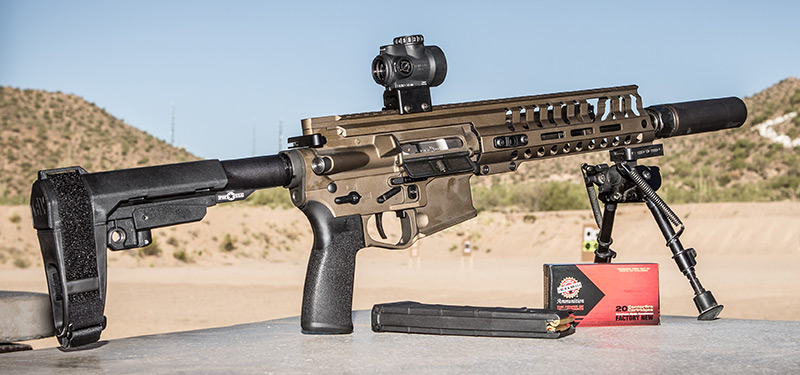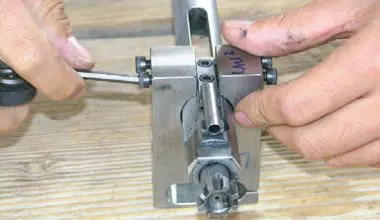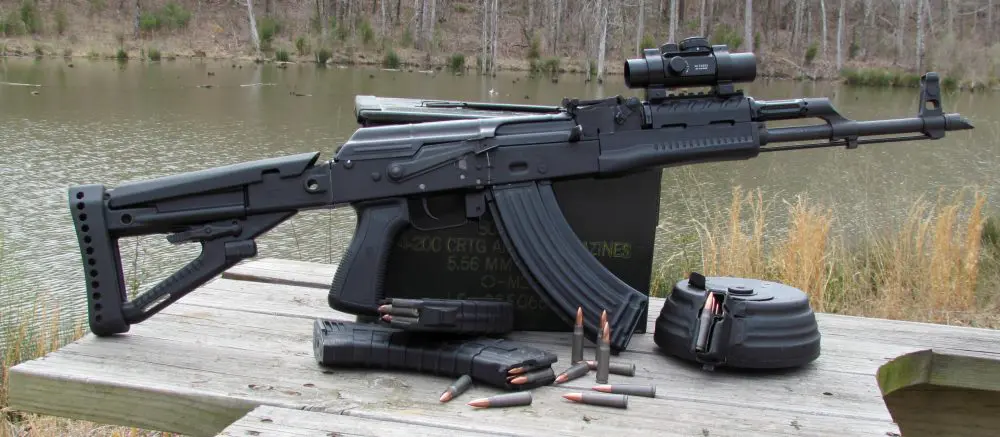
THE modern SWAT tactical marksman has at his disposal a wide variety of products, tools and equipment that allows him to perform his job at a very high level. But most departments have to strike a balance between needs and wants. Back when I was building precision rifles for the DoD, the rifles typically took about 40 hours to complete and cost north of $4K, including range testing, finishing, scope, sling, bipod, and a hard case with accessories.
Most police departments around the country don’t have the kind of money to sink into a custom rifle like that, nor do they need to, even though they may want to. A precision rifle only has to be reliable, functional, and shoot one MOA at 100 yards with a variety of ammunition under the widest possible adverse conditions.
Fortunately, a rifle I think fits that description very well is the latest effort from Savage Arms. I had earlier reviewed the Savage M10 Precision Carbine in .223 with excellent results, and I was anxious to see what the rifle could do in .308.

Table of Contents
SAVAGE M10 IN .308
The Savage M10 FCP rifle starts out with a McMillan A-5 stock in basic black. The stock does not come with the adjustable saddle cheekpiece, which I feel it should, and even though it would add to the cost of the rifle, it would still make a nice option if offered.
It would also make the rifle easier to adjust to fit a variety of different shooters and/or if the rifle were equipped with a scope having a large objective bell. This ability to personalize the rifle to an individual shooter would make it easier to shoot well.
I like the A-5 style, which is close to the A-2 style we used on most of our tactical systems back in the day. The A-5 has a little flatter forearm, being not as deep, but it is wider than the A-2. I think having a wider forearm is an advantage when shooting off a rest or other supported position. A wider forend just seems to be more stable when firing off hasty rests and when shooting off sandbags or, like I was, off a front pedestal rest.
All things being equal, a wider forend is much more stable during shooting and rides the bags very well. The stock is not the Accustock model, and as such does not have the aluminum rail running through the forend and does not need it.
The stock has twin swivel studs in the forend for mounting a sling and bipod, with one mounted on the corporal line of the stock about two inches in front of the toe of the stock in front of the recoil pad.
The stock has a nice textured surface on the pistol grip and forend, which works very well with gloved or ungloved hands. The pistol grip of the stock is a little more vertical than most and is very comfortable to shoot in all positions. Drop measurements of the stock are pretty straight, with only about .4 of an inch drop at both the nose and heel of the comb. The stock is fitted with a black one-inch-thick rubber recoil pad.
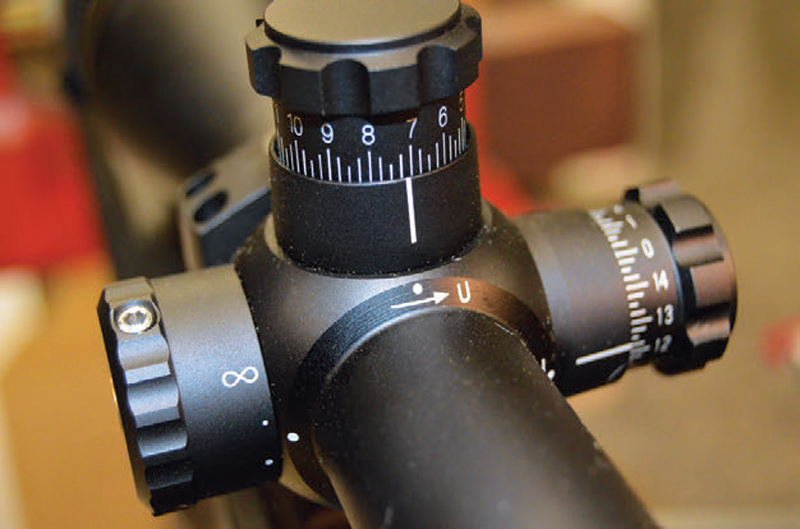
BARREL AND ACTION
The rifle itself is a heavy barreled version of the standard Savage 10 short action. Chambered in .308 Winchester, the barrel is 24 inches in length and is button-rifled with a 1:10 right-hand twist.
The barrel measures .840 inch at the muzzle and has a recessed steptype crown to protect the rifling at the muzzle. These types of crowns do a very good job of protecting the critical last few hundredths of an inch of the muzzle on a tactical rifle since they are more recessed than an 11-degree target-type crown. Tactical rifles normally get rougher handling than a typical target rifle, and the recessed step-type crowns are a practical way to protect the rifling at the muzzle.
The action has a flush-fit detachable staggered-column magazine that holds four rounds. The magazine release is conveniently located in front of the magazine in the center of the stock and is easily manipulated with gloves. I like this style of magazine release because it’s very convenient, and since it fits below flush with the stock, there is little to no chance of the button being inadvertently pressed.
The stock is cut out around the magazine release to allow for easy manipulation even with gloves, and the spring has the right amount of tension so that it takes a good press to release the magazine.
The action and barrel have a matte black finish, and the bolt is Savage’s tactical style, with an easy-to-manipulate oversized bolt handle. The stock is attached to the rifle’s action via two Allen-head stock screws, which makes it convenient to set the torque on the screws for best results.
There are different torque settings depending on whether or not the rifle has a wood stock, a wood stock that has been pillar bedded, a composite stock, or a composite stock that has been pillar bedded.

On a factory rifle such as the Savage that has a composite stock but has not been pillar bedded, the action screws should not be torqued to greater than about 50 inch-pounds. A rifle that has been pillar bedded can go up to 65 to 70 inch-pounds on the action screws. The advantage of being able to torque the action screws is that the rifle will have consistent contact between the stock and the barreled action. This keeps stresses out of the system and contributes to maintaining overall accuracy.
Action screws and the large keeper nuts on scope mounts such as the Mk4 mounts from Leupold also need to be torqued for consistent results.

TRIGGER
The trigger on the rifle is the Savage AccuTrigger. Most shooters are familiar with the trigger but to recap, the trigger has a lever in the center of the trigger that acts as a separate safety mechanism. This lever must be depressed before the rifle will fire.
The AccuTrigger permits very safe, yet low weight-of-pull settings without the chance of the sear being bumped out of engagement with the trigger itself if the rifle receives a bump or shock. I like AccuTriggers because the weight can be set to two pounds or less. Admittedly that is probably a little too low for a law enforcement rifle: 2.5 or 3 pounds would be better.

Where I think Savage could improve the trigger would be to make the trigger adjustable for overtravel. I’d like to be able to set the overtravel screw to where the trigger stops, just past the point of disengagement. If Savage doesn’t want to make this user-adjustable, then they should give it a fixed setting from the factory but closer than what it is now. The trigger pull on the test rifle came in at 2.5 pounds on my Lyman Electronic Trigger Pull Gauge.
LEUPOLD SCOPE
For this rifle, I chose the Leupold Mk4 ER/T in 4.5-14X50 with standard mildot reticle. This scope gives a wide field of view at the lower powers and can be cranked up for the ranges that the typical law enforcement rifle will be deployed at. Most actual law enforcement shootings with the tactical rifle occur at short ranges, in the neighborhood of 10 to 100 yards.

But like their military counterparts, much of what the law enforcement marksman does is not actual shooting but intelligence gathering and observing. Being able to zoom in and observe a situation in detail with a 14X scope can give a tactical advantage.
The Leupold scope 4.5-14 gives a great field of view at various ranges. The scope has a FOV of a little over 20 feet at the low setting, and eight feet at the high setting at 100 yards. Eye relief is a standard four inches, and weight is just less than 1½ pounds. This scope is a great choice as it is very bright and clear at all powers and all ranges we tested. I accuracy tested the rifle/scope combo at 100 but also did some shooting at 300, and it was nice to be able to crank up the glass to maintain the precise aiming point.
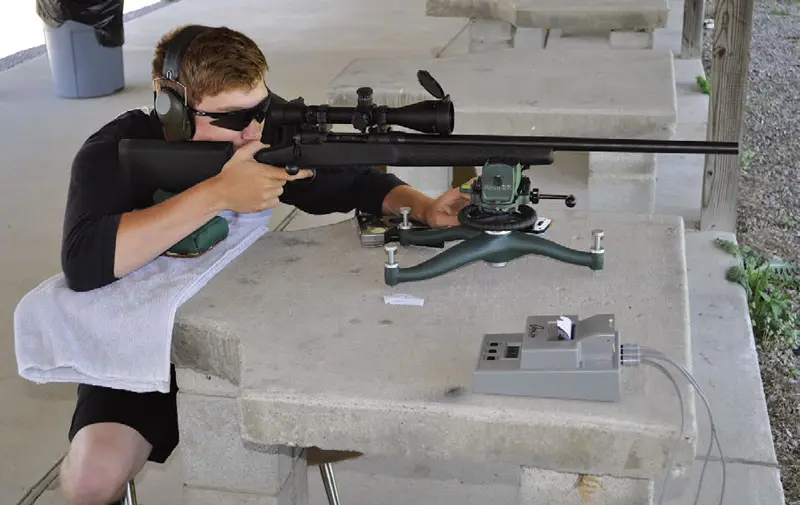
My son and I did some more shooting later in the evening as the sun was dropping. The light-gathering coatings and Xtended Twilight Lens System on the Leupold scope really helped.
The scope was mated to a pair of Mk4 two-piece bases and rings. I lapped the rings in with my scope ring lapping tool from Brownells, mounted the scope, torqueing the keeper nuts on the rings to 65 inch-pounds, and headed out to my local range.
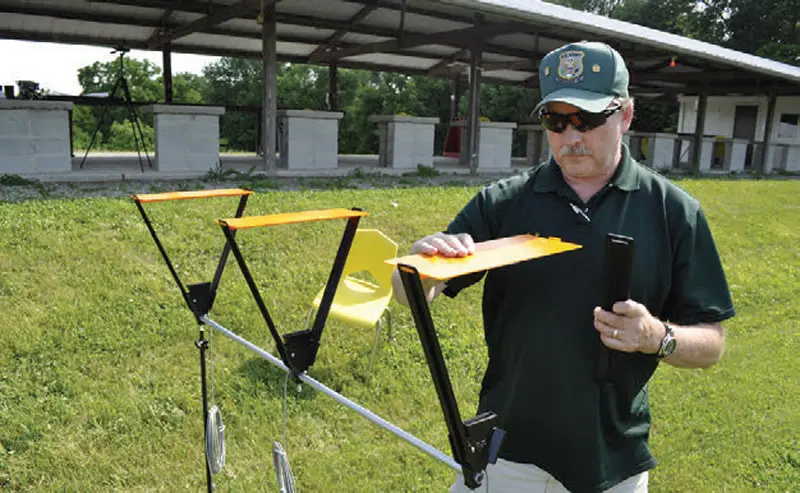
RANGE RESULTS
I set up my Oehler 35P chronograph and went to work. Velocities were about what I expected from factory .308 ammunition from various manufacturers. The American Eagle and Speer Gold Dot gave the highest velocities, about 2,900 feet-per-second (fps), but at 150 grains, that’s what I expected. The 168-grain weights from Hornady, Federal and Black Hills turned in velocities in the 2,700 fps range.
Time constraints kept me from fully testing the rifle farther than 100 yards, but the results were a little surprising. This Savage rifle did not like this particular lot of American Eagle ammunition, but since I’ve tested that ammo in other rifles, I know it can shoot better than the 2.95 inches that it did.
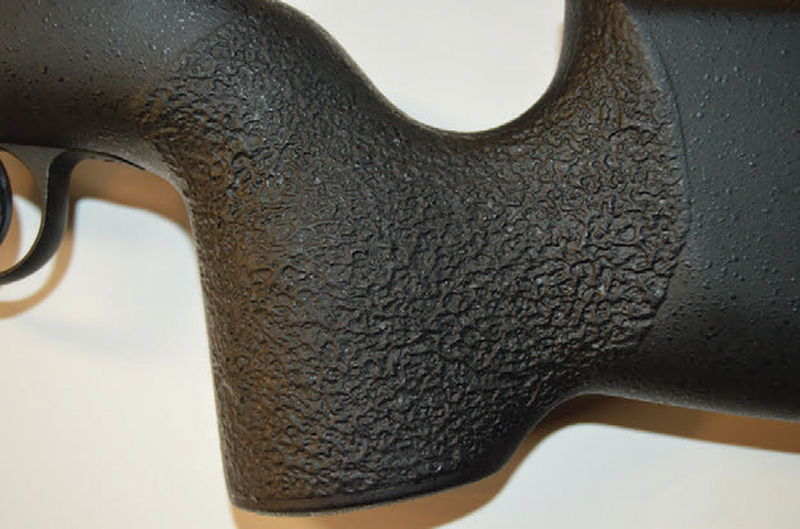
On the other hand, the rifle absolutely liked the Hornady and the Federal 168-grain Match. I thought the Federal Match might shoot the best based on past experience, but the rifle preferred the Hornady, which came in with the best group of the day, a five-shot group of .546 inch. The 168-grain Federal shot a group of .972 with a called flyer. The Black Hills also shot well, and I wish I had time to do more testing with that ammo, since I’ve had excellent prior results with Black Hills.
One piece of equipment that really helped out at the range was the Bushnell Elite Tactical 8X30 Spotting Scope. With a 50mm objective lens, it was bright and clear at every power setting and range we used.
The Savage rifle combined with the Leupold Mk4 ER/T makes an excellent precision rifle that will perform with distinction in any situation.

